The monarch, Danaus plexippus, is probably the most commonly made species of butterfly. It’s been made by several major company, including CollectA, Safari Ltd (at least five times), Papo, and K&M International (at least twice), and is a common edition to insect and butterfly tubes, blister packs, and box sets ( couple examples on the Blog, here and here). Today we will be looking at one of the five aforementioned Safari figures, a complete life cycle that was produced for their Safariology line in 2012. I talked about the distribution and some biological notes when I reviewed the Papo figure earlier, so I won’t rehash that here. But I will revisit some biological notes as they pertain to each part of the life cycle below.
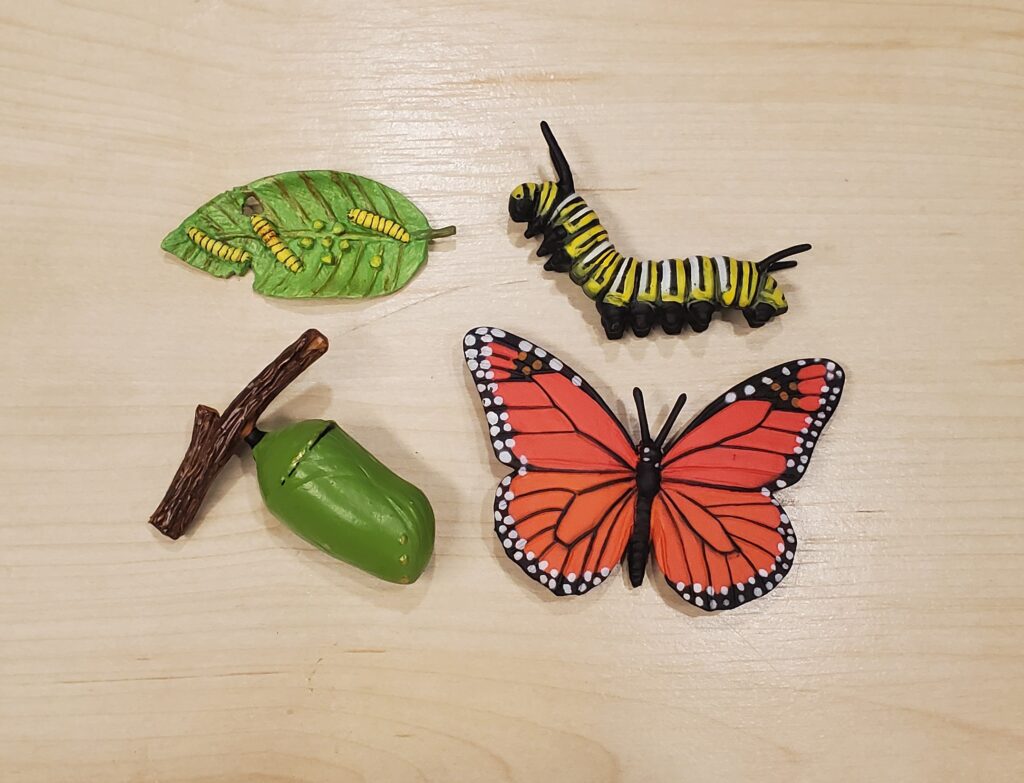
First, let’s start with the eggs and first instar larvae. Unlike what’s shown in this figure, eggs of D. plexippus are typically deposited singly and not in clusters. Host plants for the monarch are primarily milkweeds in the dogbane family (Apocynaceae); common host genera include Asclepias, Calotropis, Cynanchum, and Funastrum. Despite being deposited singly, a gravid female can lay 300-500 eggs over a 2-5 week period. Eggs typically hatch into first instar larvae after about 8 days.
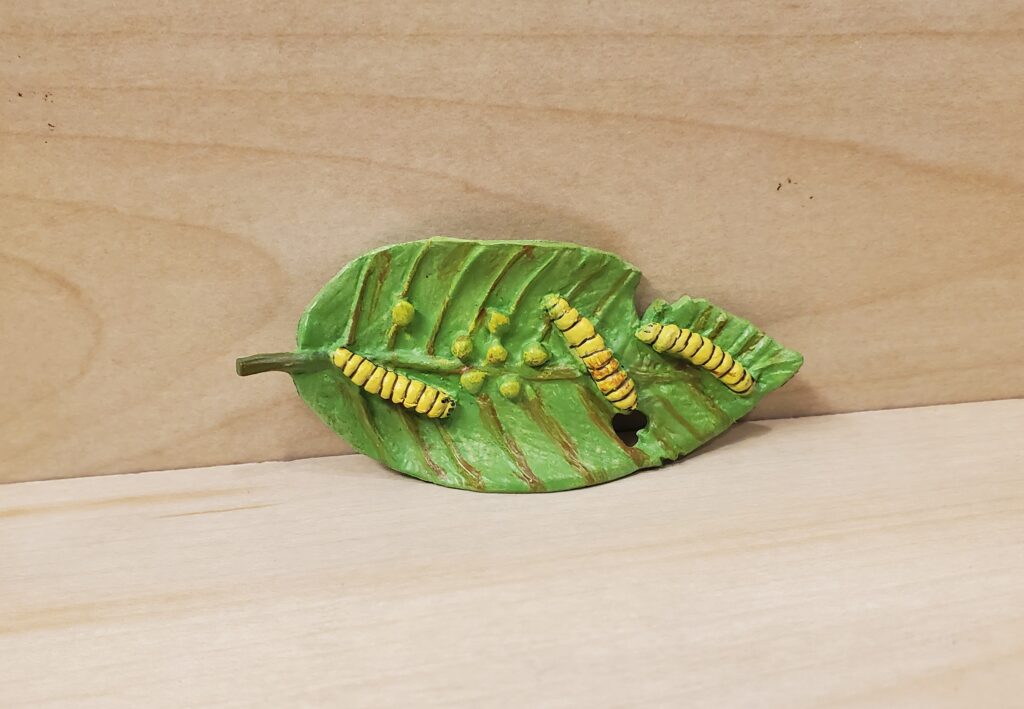
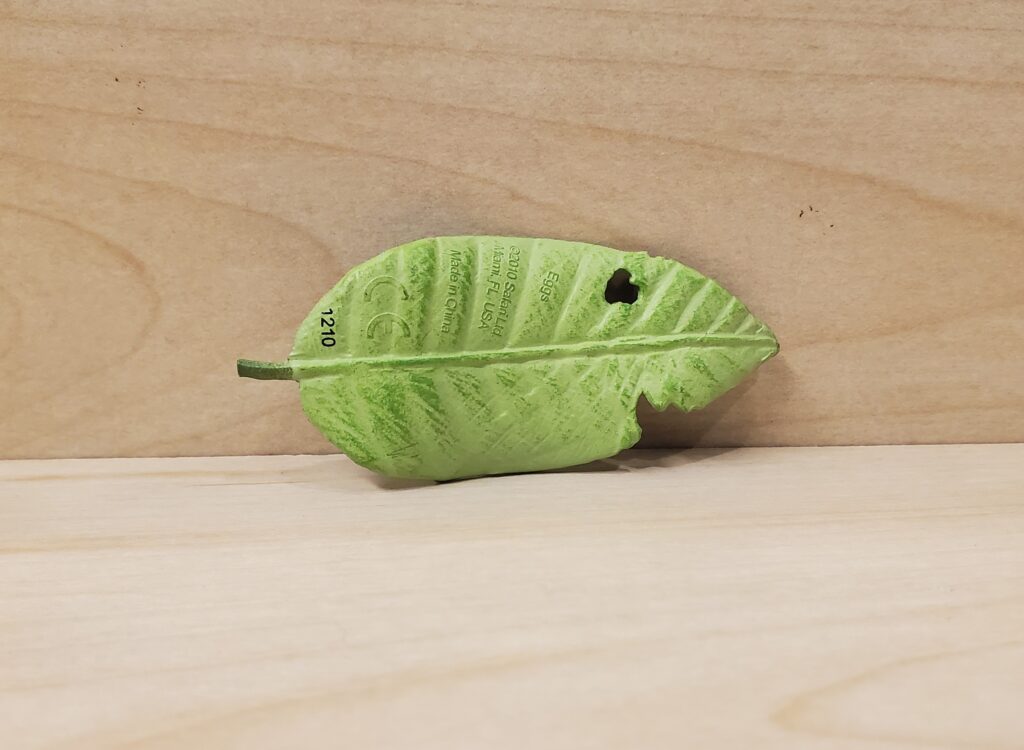
Next up is the mature larvae. Danaus plexippus has five larval instars, with each lasting approximately 3-5 days depending on food availability, temperature, etc. A mature fifth instar larva is approximately 4.5 cm in length. This figure has a body length of approximately 7.0 cm for a scale of 1.5:1. When the mature larva is ready to pupate it stops feeding and then migrates away from the host plant.

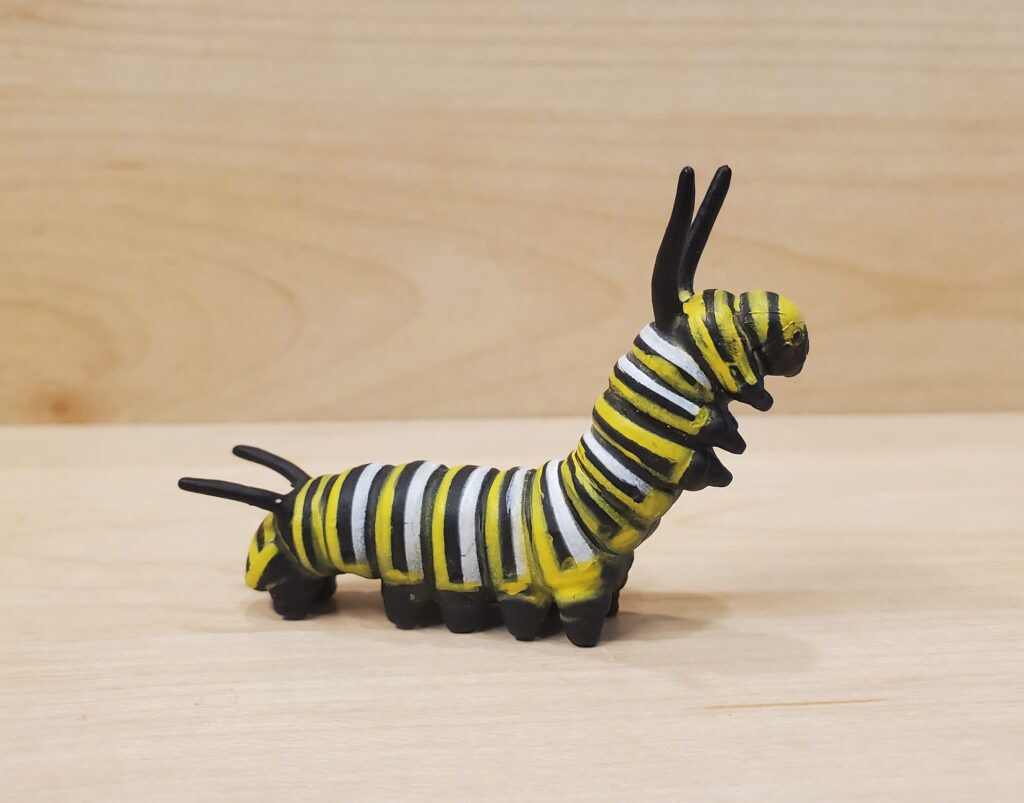
The monarch typically spends 8-15 days as a pupa. Shortly before emergence, the chrysalis becomes transparent and the adult colors of the butterfly can be seen within. A mature pupa is roughly 2.5 cm long; this figure is approximately 4.5 cm long for a scale of 1.8:1. It’s a beautifully sculpted and painted pupa!! It’s possible to sex monarchs in the pupal stage, and this figure appears to represent a male species (although I doubt that was the intent; the artist probably just didn’t know the nuances of separating the two, but I would be pleasantly surprised if they did).
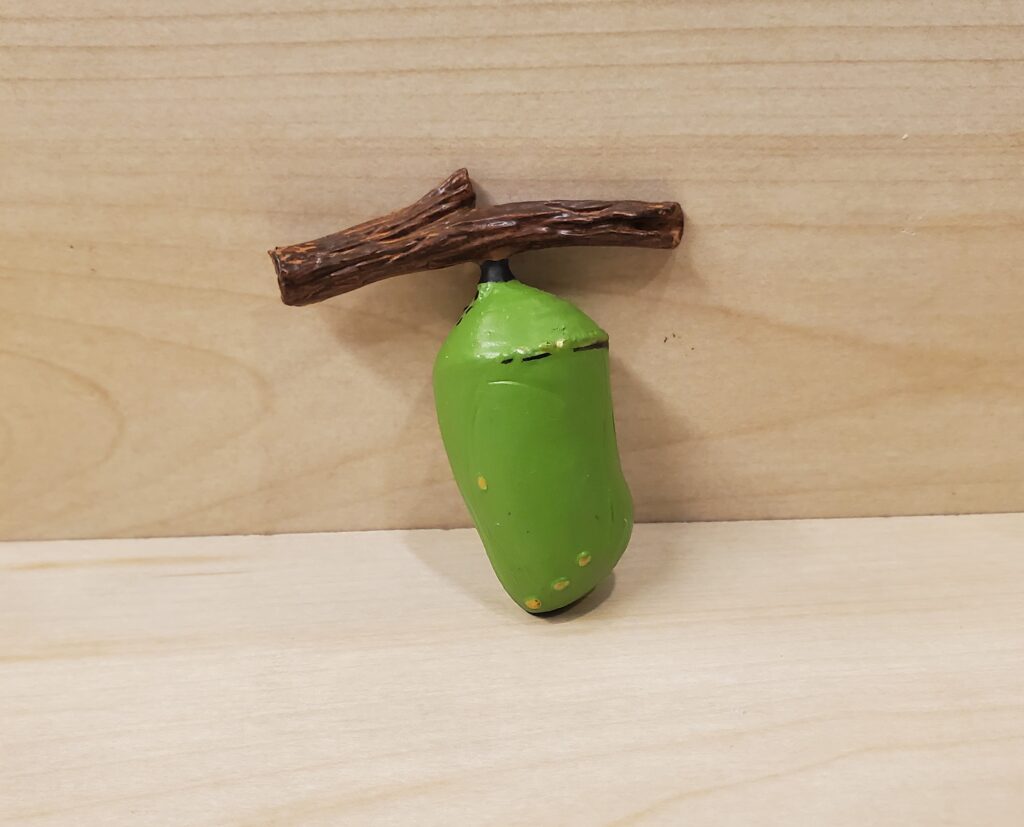
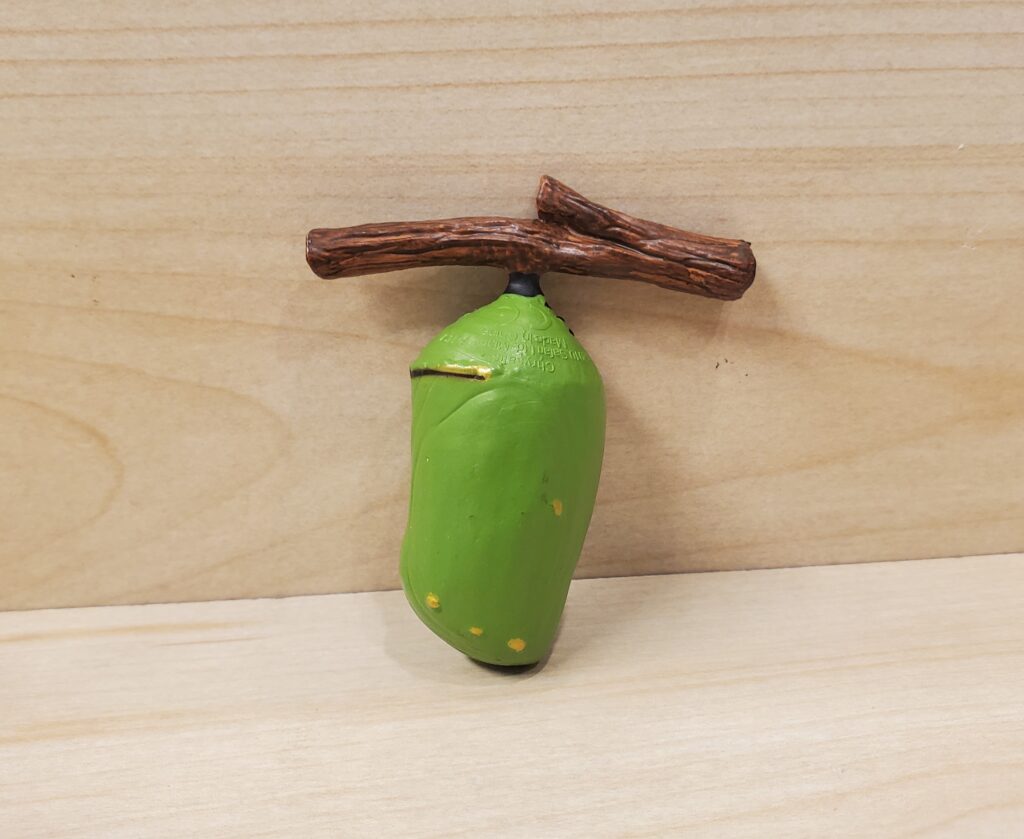
And at last we come to the adult. This is actually one of the better crafted monarch figures out there and is accurately painted both dorsally and ventrally! And look at the ventral pic!! What’s what I see? Only four functional legs??? Just as there should be! Kudos to Safari Ltd. for getting this right; it’s one of the most commonly-made errors on nymphalid butterfly figures (if you’ve read my past blogposts, you’ve heard this before…). In all credit to Safari, they also got the leg count correct in their original Smithsonian Insects monarch and the follow-up Hidden Kingdom figure as well. Also, if I remember correctly, Safari released today’s butterfly separately for a brief period of time in their Hidden Kingdom Insects line (I think they did the same thing with the adult honey bee from that life cycle set, too). This butterfly has a wingspan of approximately 8.5 cm, which puts it just under 1:1 for a small specimen (scale range would be 1:1-1:1.2).
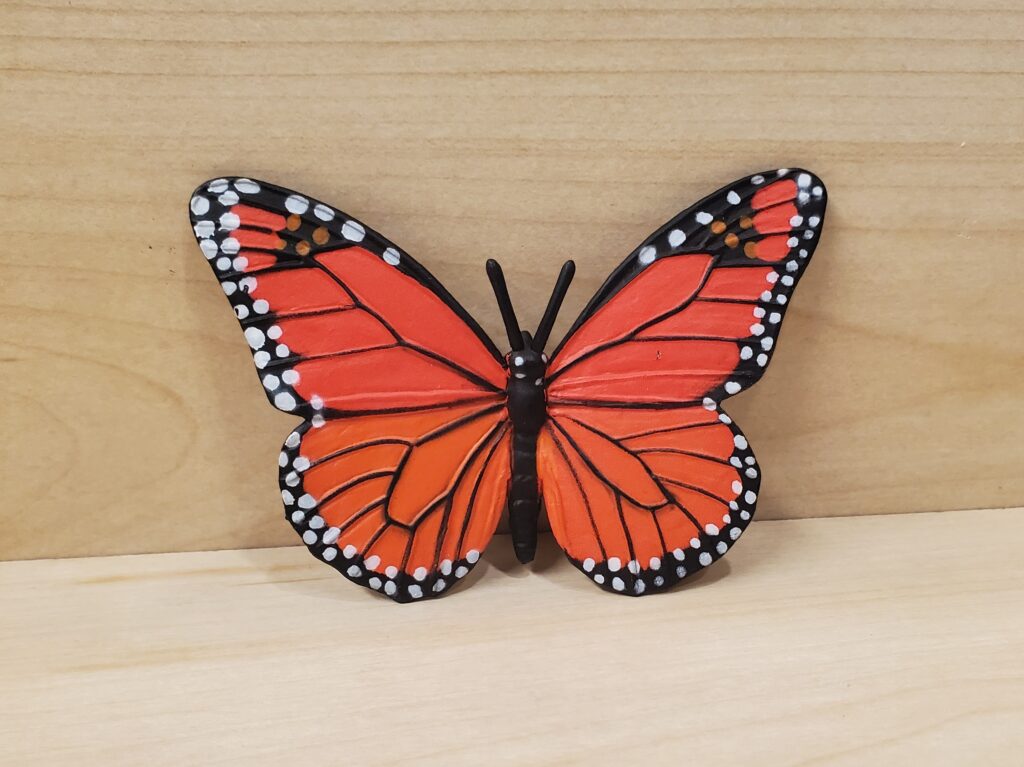
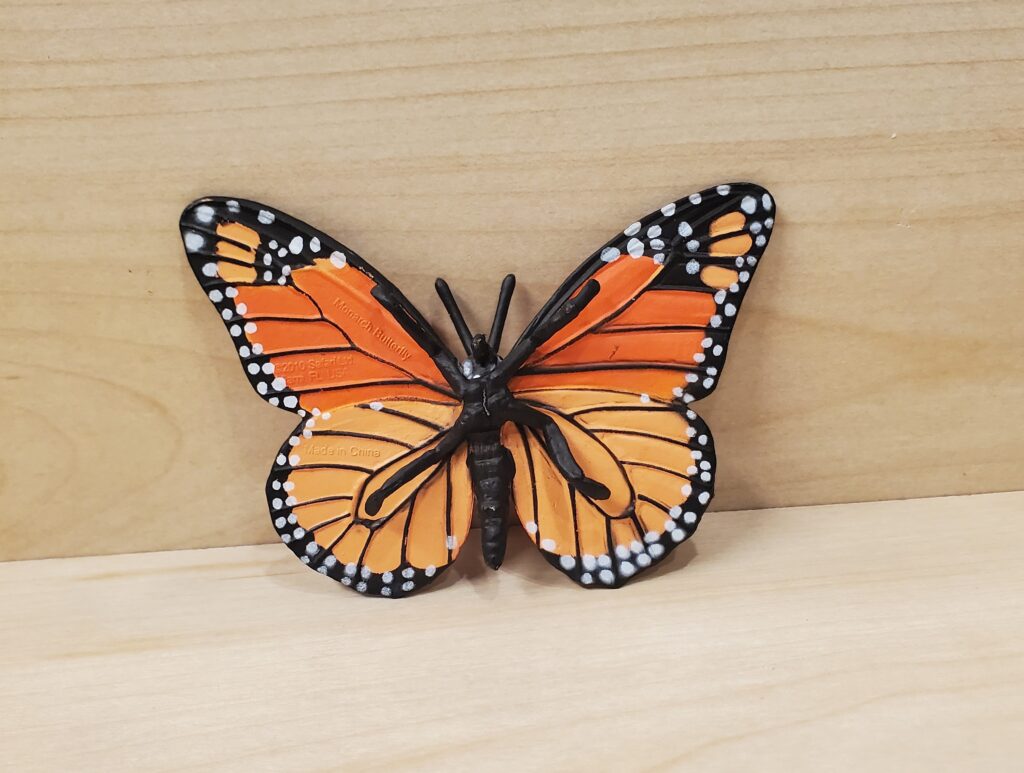
Overall this is a really nice life cycle set. The larva, pupa, and adult are accurately sculpted and painted. If one wanted this species, this set offers four stages that take up minimal space. The adult is one of the very few monarch figures to get the number of legs correct (the CollectA figure got it right, too). This set is also a great educational toy for both children and adults who want to learn more about butterfly metamorphosis. The set is still available and can be found on Safari’s website as well as eBay and Amazon (but beware of knockoffs on Amazon!).

Disclaimer: links to Ebay and Amazon on the AnimalToyBlog are affiliate links, so we make a small commission if you use them. Thanks for supporting us!




For some reason, I did not know this set existed. But I know about the Luna moth one and it has been on my to-buy list for awhile. I guess I should get this one too!
Safari has actually gotten complaints about its Monarch figures from folks saying they have the incorrect number of legs. A lot of people expect to see six full-sized legs. On the Incredible Creatures, you can clearly see the vestigial legs tucked under the body, but its less obvious on the Life Cycle figure.
I would rather the vestigial legs not be visible than have six fully functional legs. I don’t have the figure handy (I am at work), but I think the leg count might be wrong in the Authentics monarch (but those are generally rather stylized anyway). But given how often companies get the leg count wrong on nymphalid butterflies, kudos to Safari for getting it right for at least three of their monarchs.
If I remember correctly, the original Smithsonian morpho was released with six legs, but was corrected and later releases have only four. Mine has only four and I chatted with another collector who got theirs new with only four. The HK morpho is incorrect, however.